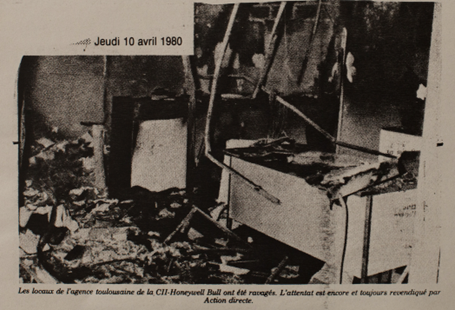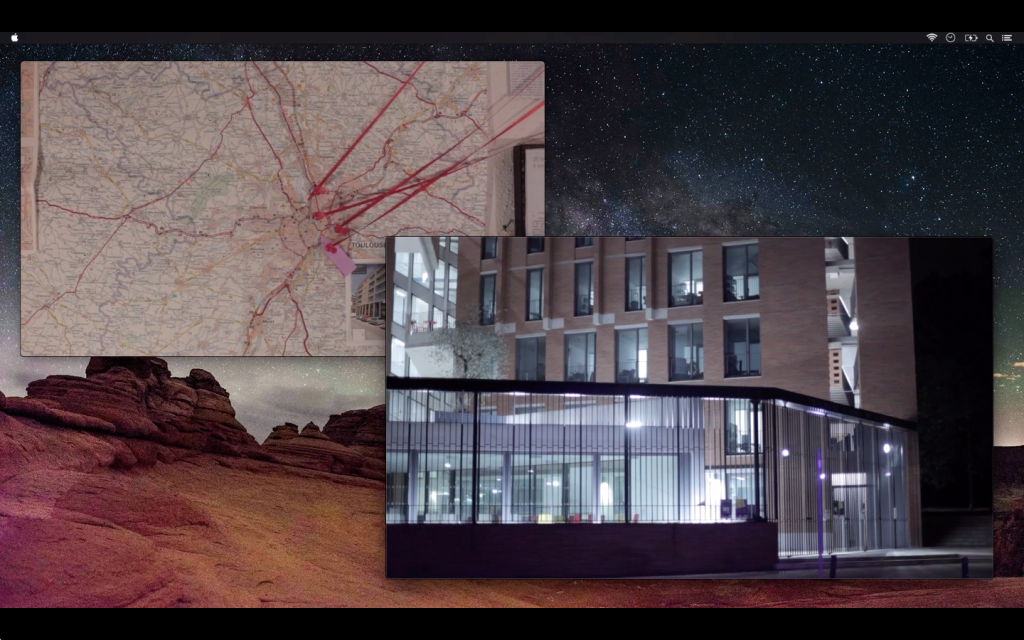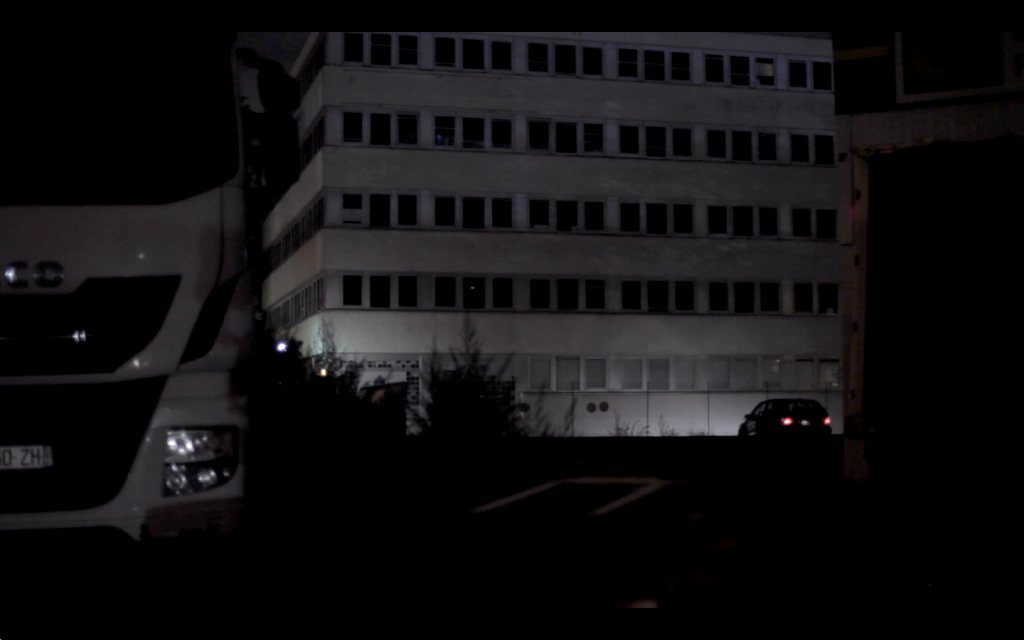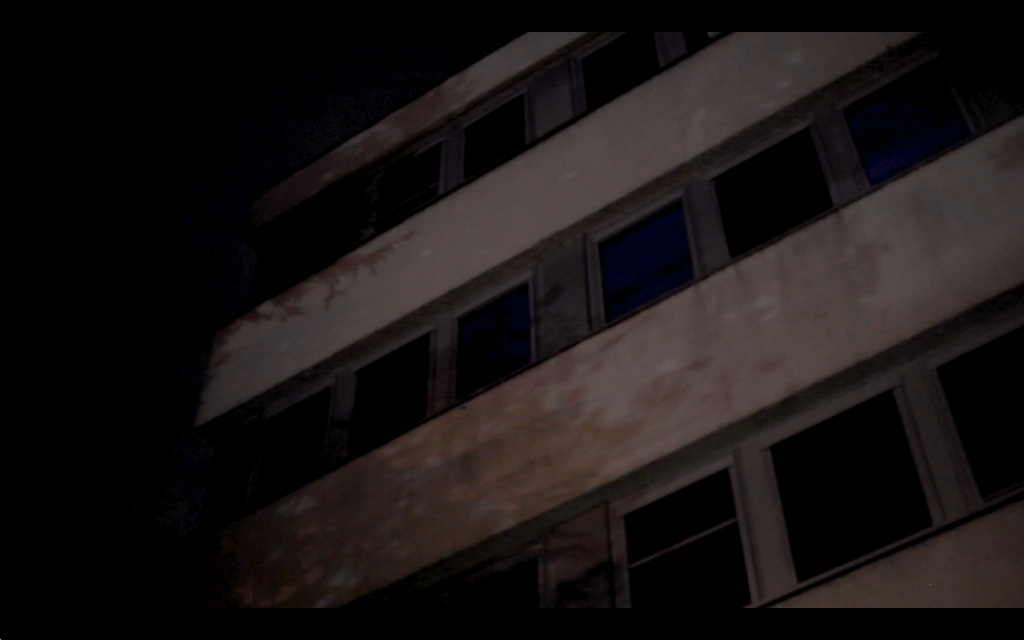In May 2022 we welcomed the directors and producers of the film Machines in Flames, Thomas Dekeyser and Andrew Culp. For the first half of the session we each watched the film individually, which was then followed by a discussion with Thomas and Andrew.
Machines in Flames is an experimental documentary that details the journey Thomas and Andrew underwent in the search for the group CLODO (Committee for Liquidation and Subversion of Computers). CLODO were/are an elusive group who were invested in attacking and burning down computer centres in France in the early 1980s. After a series of attacks in Toulouse, they disappeared and were never discovered.
Thomas and Andrew are interested not only in CLODO’s actions, but their anonymity as a group – how they were present and then absent; and, how they disappeared without any arrests. Through the film, they try to make sense of CLODO and how they evaded ever being known. The film also addresses methodological questions of what it means to archive and what it means to conduct archival research. The evasive nature of CLODO can be seen in the difficulties Thomas and Andrew had in unearthing information on CLODO. They began their search by using investigatory computational tools, the exact tools that CLODO had fought against. Traces of the group can be found only in the remaining records – in the newspapers, legal documents, and photographs that have been archived since the 1980s. By combining footage of stakeouts, desktop choreography, and archival traces, Machines in Flames takes the audience on a journey to investigate cybernetics and fire (Machines in Flames, 2022).
Finding CLODO proved a challenge that required going beyond a computational search – CLODO had successfully evaded detection and concealed their actions. Therefore, to know CLODO, the filmmakers needed to become CLODO. Discussing the embodied approach to the film, by visiting the sites CLODO would have visited, Thomas and Andrew said they could gain an understanding of what CLODO experienced. They could gain familiarity with the buildings CLODO staked out and the streets they roamed. They could ask similar questions about the threats of computation and attempt to understand the reason behind CLODO’s attacks. This provided a connection to CLODO that had not been experienced before, a connection that was not possible by solely investigating newspaper articles or viewing locations through investigatory computational tools, e.g., Google Earth. Knowing CLODO meant becoming CLODO.
Perhaps one of the most powerful aspects of the film is the embodied projection of the stakeout, of becoming CLODO. The audience is emerged in the nocturnal stakeout as the camera travels across the various locations throughout the film. More than just panning, the camera moves like a person, embodying the role of the observer, the planner, the attacker. Suspenseful music accompanies the night-time scenes, the anticipation of the attack mounting, leading you to question how CLODO felt. Were they nervous? Did they get a thrill out of it? Why were they doing it?
Knowing CLODO’s view of the use of computers as tools to exploit and control sheds light on why they attacked them. Through the attacks, CLODO was not resisting the computational technology of these machines, but what these machines could lead to. They could be used to cause destruction through military violence, and they could be used for surveillance within everyday life, therefore, CLODO saw these machines as dangerous. Their focus of concern was on computers, and unlike other groups, CLODO caused violence-without-death. They did not target the people working or monitoring the computers, but the machines themselves, burning them to the ground. Engulfing these machines in flames destroyed an archive of data, it was present and then absent, lost in the flames with only fragments left behind.

Through the production of a documentary film, Thomas and Andrew engage in an interesting conversation about conducting archival research. In creating new traces, they suggest that they are adding – to the archive – material on a collective whose existence was concentrated on the need for self-erasure. Mapping out the locations of CLODO’s attacks on Toulouse, through the use of people of interest and archival material, led Thomas and Andrew to question whether all they discovered in their investigation was in fact adding to the archive they should have been depriving. Should an archive shrouded in destruction, both by the cause and effect of the attacks, be celebrated when additions are made several years later? Furthermore, Thomas and Andrew admit that they relied on machines throughout their research, the opposite of what CLODO warned of doing. Was this CLODO’s point then? That the archive cannot be undone by its own logic. This leads the filmmakers to ask a number of questions on the nature of archives; what it means to document a particular form of knowledge; if there can ever be an anti-authoritarian archive; and, the destruction of archives by flames.

Machines in Flames provokes a discussion around CLODO as a group and its politics, exploring how control and surveillance through computation led to a response with flames. CLODO showed coordination and purpose in their attacks, targeting computers that were being used to control, dominate, and exploit. The film also investigates important methodological questions around producing a documentary film and the nature of the archive. CLODO realised that the archive is not only underpinned by control and containment, but also by an “uncontainable entropy that leads only to self-combustion” (Machines in Flames, 2022). As Derrida (1996) argued in Archive Fever, the archive is both memory and loss, where things are created but also destroyed. Therefore, like fire, the archive is a measure of both life and death.
We would like to thank Thomas and Andrew for presenting such a thought-provoking documentary film which led to an engaging discussion at Landscape Surgery. You can find Machines in Flames on Twitter (@flames_film).
Written by: Beth Williamson
Edited by: Eva Barbarossa
Derrida, J. (1996) Archive Fever: a Freudian impression. Chicago: University of Chicago Press.



